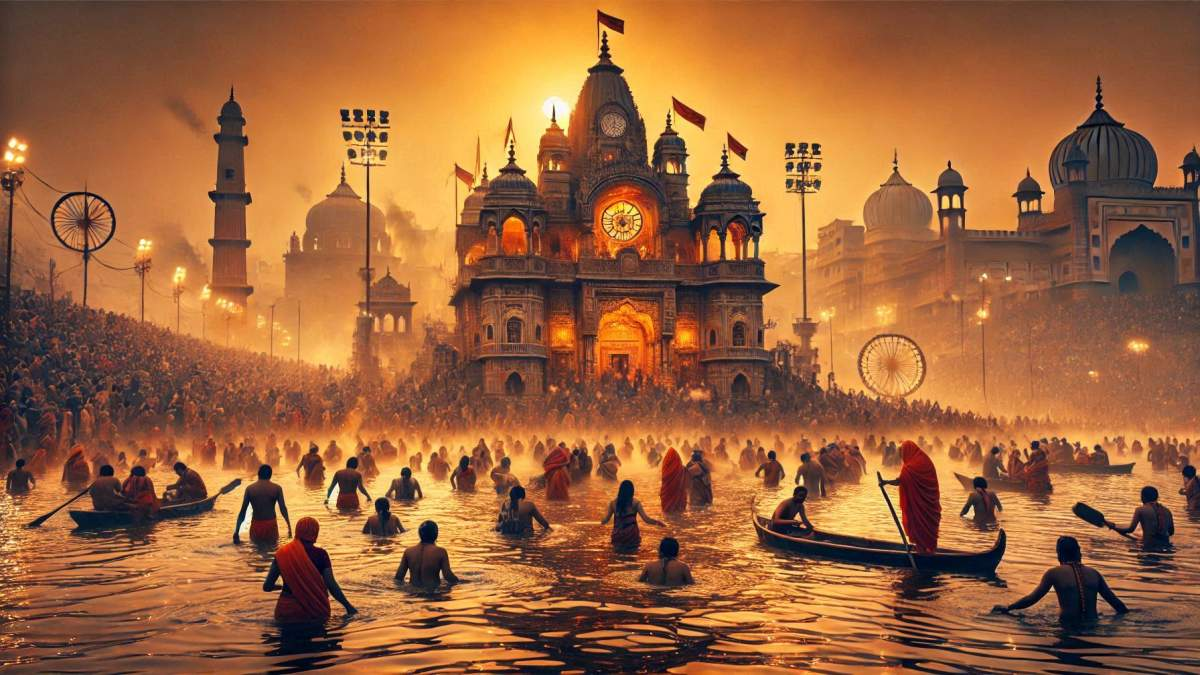Mahakumbh, often referred to as the largest congregation of humanity, is not just a religious event but a profound cultural and spiritual phenomenon. Held every 12 years at four sacred locations in India—Prayagraj, Haridwar, Ujjain, and Nashik—this grand festival attracts millions of devotees, ascetics, saints, and tourists from around the world. The Mahakumbh is a unique blend of faith, tradition, and community spirit, making it an unparalleled experience.
Historical and Mythological Significance
The origins of the Mahakumbh can be traced back to ancient Indian scriptures and mythology. According to Hindu beliefs, the event is rooted in the legend of the Samudra Manthan (churning of the ocean). During this celestial event, the gods (Devas) and demons (Asuras) churned the ocean to obtain Amrit, the nectar of immortality. As the nectar was being carried to safety, a few drops fell at four locations—Prayagraj, Haridwar, Ujjain, and Nashik—sanctifying these places forever.
The term ‘Kumbh’ translates to a pot, symbolizing the pot of nectar. The Mahakumbh is celebrated at these sacred sites, with each location hosting the festival in a cyclic rotation.
Image Source
Spiritual Importance
The Mahakumbh is a once-in-a-lifetime opportunity for many devotees to cleanse their sins and attain Moksha (liberation). The act of taking a holy dip in the sacred rivers—the Ganga, Yamuna, Saraswati (Prayagraj), the Ganga (Haridwar), the Shipra (Ujjain), and the Godavari (Nashik)—is believed to purify one’s soul and grant spiritual merit.
For ascetics and sadhus, the Mahakumbh is a platform to showcase their spiritual practices, engage in discourses, and reconnect with their communities. It also serves as a meeting point for spiritual leaders and followers from different sects.
The Grand Scale
The sheer scale of the Mahakumbh is awe-inspiring. The event spans over several weeks, with key dates designated for Shahi Snan (royal baths). Millions of people, including international visitors, gather at the Kumbh to witness this divine spectacle.
Temporary cities with extensive infrastructure, including tents, medical facilities, sanitation, and security, are established to accommodate the influx of devotees. The coordination between government agencies, volunteers, and religious organizations showcases impeccable planning and unity.
Rituals and Celebrations
The Mahakumbh is marked by various rituals and activities:
Shahi Snan: The royal bath is the most significant ritual, led by Naga sadhus and other religious sects. They march to the river in grand processions, often accompanied by chants, music, and vibrant displays.
Yagyas and Pujas: Devotees participate in fire rituals and prayers to seek blessings and invoke divine energies.
Spiritual Discourses: Saints and gurus deliver enlightening sermons on spiritual and philosophical topics, attracting large audiences.
Cultural Events: The festival also features traditional music, dance, and art, showcasing India’s rich cultural heritage.
Significance in Modern Times
In today’s fast-paced world, the Mahakumbh serves as a reminder of India’s deep-rooted spiritual and cultural values. It offers an opportunity for people to pause, reflect, and reconnect with their inner selves. For many, it is also an occasion to experience the diversity and unity of Indian traditions.
Moreover, the Mahakumbh has gained global recognition as a UNESCO Intangible Cultural Heritage, drawing attention to its historical and cultural significance.
Conclusion
The Mahakumbh is more than just a festival; it is a celebration of life, faith, and humanity. It unites people from all walks of life, transcending barriers of caste, creed, and nationality. As the holy chants resonate and the sacred waters flow, the Mahakumbh continues to inspire awe and devotion, leaving an indelible mark on every participant’s soul. Truly, it is an event that embodies the spirit of ‘Vasudhaiva Kutumbakam’—the world is one family.
Team Yuva Aaveg-
Mayank
Join Yuva Aaveg! 🌟
A vibrant community dedicated to empowering youth with the latest insights, discussions, and updates on topics that matter. Connect with like-minded individuals, share ideas, and stay inspired to make a difference.
WhatsApp Telegram









